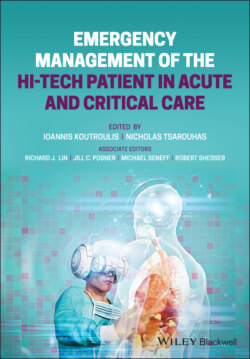Читать книгу Emergency Management of the Hi-Tech Patient in Acute and Critical Care - Группа авторов - Страница 76
Introduction
ОглавлениеThe continual advancement of treatment for chronic diseases has brought with it an increased emphasis on allowing patients with long‐term medical needs to receive much of their care in the outpatient setting. In this context, the use of indwelling central venous catheters (CVCs) has become a mainstay in the management of adults and children with chronic illness. CVCs provide patients with stable routes for life‐saving infusions – including parenteral nutrition, blood transfusions, and chemotherapeutic agents – and allow for reliable venous access in patients who require frequent blood draws or whose peripheral vasculature no longer adequately supports recurrent venipuncture. Because of their placement in the large vessels of the central vasculature, CVCs can be used to infuse medications that are otherwise vesicants in peripheral vessels, and they are often the preferred means of administration for infusions containing high concentrations of electrolytes and/or dextrose.
As the number of patients receiving care in the community via CVCs increases, so too does the number of patients with CVCs presenting to the emergency department (ED). For this reason, ED practitioners must be familiar with both the routine care of these devices, as well as with the workup and management of their most common and most serious complications. When a patient with an indwelling CVC presents to the ED, the clinician must have a high index of suspicion for – and must be able to recognize – the symptoms of catheter‐related complications, particularly as the patient's presenting complaint may not initially implicate the device.
